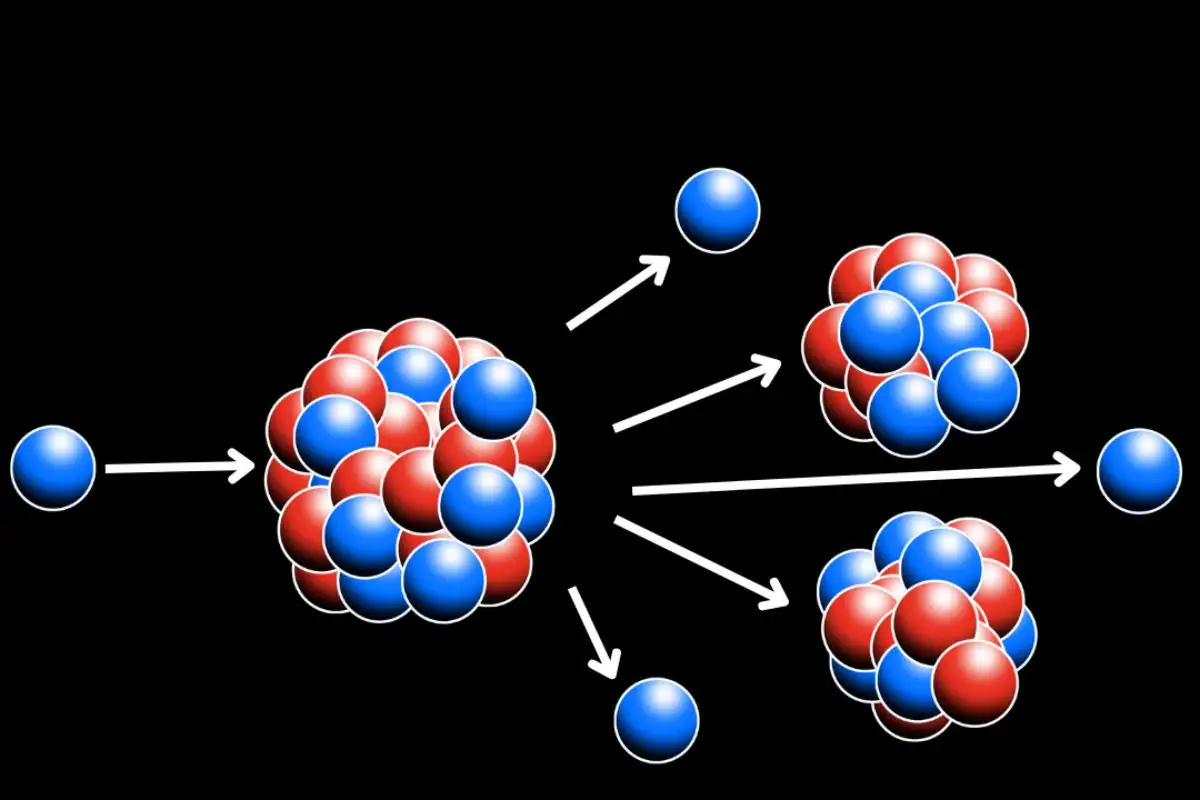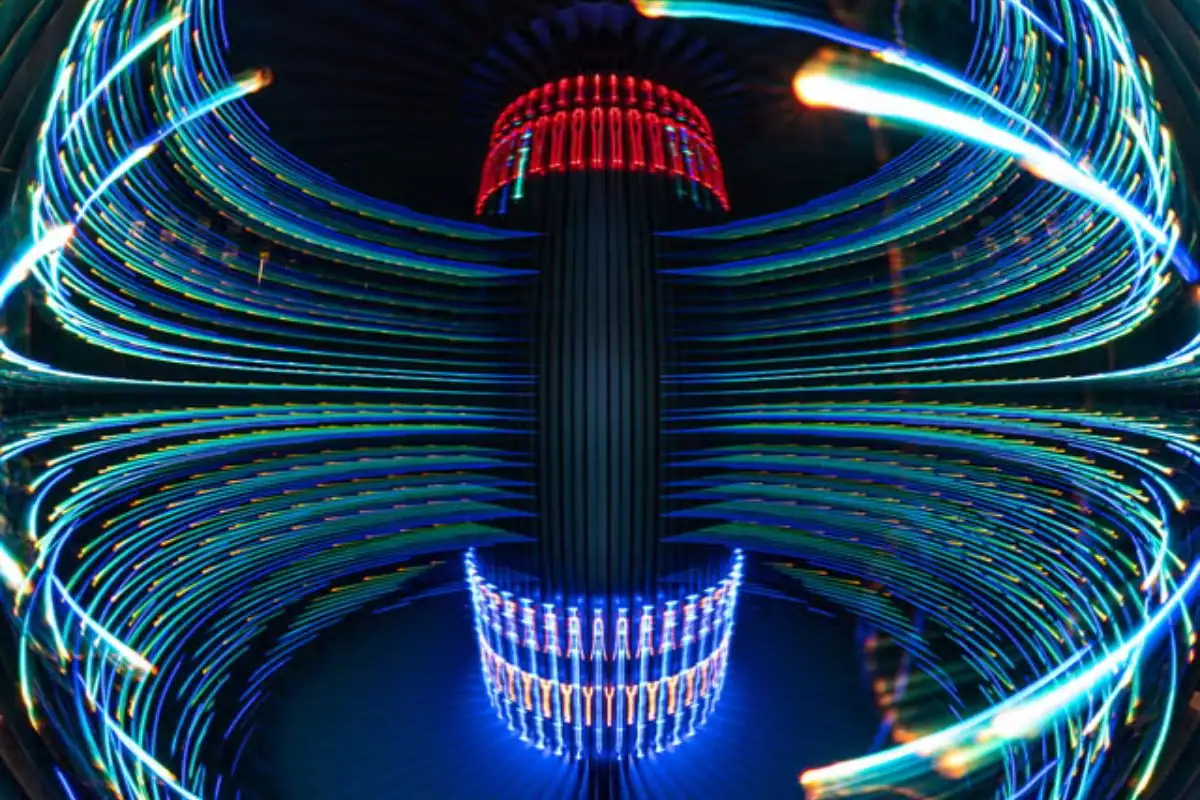Advertisement
Difference Between Nuclear Fusion and Fission
Advertisement
Nuclear fusion and fission are powerful natural processes that release immense energy through atomic interactions. These energies far exceed those of typical chemical reactions. While both phenomena are essential for life on Earth, their human-engineered applications often grab headlines. The use of nuclear energy has brought both promise and peril, shaping the modern world with opportunities and challenges alike.
What is Nuclear Fission?
Nuclear fission involves splitting an atom into two or more smaller atoms with lower atomic weights. When this process occurs, the total mass of the resulting smaller atoms is slightly less than that of the original atom, with the difference converted into energy. As Einstein’s famous equation, E=mc², suggests, even a small amount of mass can generate a significant amount of energy. This immense energy potential is tied to the atomic nucleus and is what makes fission so impactful.

Advertisement
Nuclear Fission in Nature
Fission naturally occurs in elements like uranium and thorium, which undergo slow, spontaneous reactions that release heat and radiation. This natural process helps warm the Earth’s crust and its molten core. The heat generated by radioactive decay is also believed to drive the movement of tectonic plates. Additionally, the rotating molten core creates Earth’s magnetic field, which shields life from harmful solar and cosmic radiation.

Advertisement
Early Atomic Physics
The foundation for understanding nuclear fission came from early 20th-century atomic physics. In 1913, Danish scientist Niels Bohr introduced the idea of an atom as a “miniature solar system,” with electrons orbiting a central nucleus. He described how radiation is emitted or absorbed when electrons shift between these orbits. Throughout the 1920s and 1930s, scientists conducted experiments that refined this atomic model, paving the way for deeper insights into atomic energy.

Advertisement
The Manhattan Project
The potential for fission as a source of massive energy became clear when scientists discovered that bombarding a heavy atom's nucleus could start a chain reaction. This realization led to the Manhattan Project during World War II, which ultimately produced the atomic bombs dropped on Hiroshima and Nagasaki. This marked the first significant man-made application of fission, showcasing its immense destructive power.

Advertisement
Using Nuclear Fission for Energy
Beyond its military use, nuclear fission holds promise as a powerful energy source. Nuclear energy is millions of times denser than conventional fossil fuels, making it an attractive option for power generation. The first commercial-scale nuclear power plant began operation in Shippingport, Pennsylvania, in 1957, producing 60 megawatts of electrical power. This success spurred the development of dozens of reactors across the globe, offering an alternative to traditional power sources.

Advertisement
Challenges with Nuclear Waste
Despite its benefits, nuclear fission comes with challenges, especially in managing radioactive waste. Byproducts of fission remain hazardous for many years, posing significant storage and environmental issues. The accidents at Three Mile Island in 1979 and Chernobyl in 1986 highlighted the risks, even with advanced engineering. These events showed that while nuclear power offers great potential, it also carries serious safety concerns that need careful management.

Advertisement
What is Nuclear Fusion?
Nuclear fusion, unlike fission, involves combining two or more atoms to form a heavier atom. The resulting atom has slightly less mass than the total of the original atoms, with the lost mass converted into energy. Fusion generates several times more energy than fission and produces radioactive byproducts that are short-lived compared to fission waste. This process holds great promise for cleaner, more sustainable energy.

Advertisement
Nuclear Fusion in Nature
The most prominent natural example of nuclear fusion is the Sun. At its core, extreme heat and gravity cause hydrogen atoms to fuse into helium, releasing massive amounts of energy. The Sun has been carrying out this fusion for about 4.5 billion years and is expected to continue for at least another 5 billion years. This process fuels the Sun’s light and warmth, making life on Earth possible.

Advertisement
Efforts to Achieve Nuclear Fusion
While fusion seems promising, achieving it sustainably on Earth has proven to be a major challenge. One of the biggest obstacles is overcoming the electrostatic repulsion between atoms and creating fusion without expending more energy than it produces. In nature, this is accomplished at temperatures of millions of degrees. Engineers and scientists have spent decades and billions of dollars trying to replicate this in controlled conditions. Although progress has been made, a fully operational fusion power plant has yet to be achieved.

Advertisement
The Future of Nuclear Power
As the world seeks carbon-neutral energy solutions, nuclear power remains a contender. Advanced fission reactor designs now exist that can reprocess radioactive waste, making them more efficient and safer. However, nuclear fusion continues to be the “holy grail” of power generation. If scientists can master fusion technology, it could provide limitless energy without the long-lived radioactive waste associated with fission. The pursuit of fusion holds the promise of a cleaner, more sustainable energy future.

.png)




